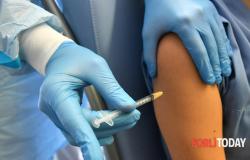With the arrival of summer, sexually transmitted infections (STIs) have returned to the center of attention: primarily HIV, but also viral hepatitis, the papilloma virus and bacterial infections caused by chlamydia, gonorrhea and syphilis. With the latter, in particular, which have recorded a greater increase in infections, especially among young people. This is the picture that emerged on the occasion of the 16th edition of Icar (Italian Conference on Aids and Antiviral Research), held at the Università Cattolica del Sacro Cuore, which highlighted an increasing trend in STIs, underlining the importance of prevention and information.
Data in Italy
While awaiting the publication of the official newsletter of the Higher Institute of Health, according to the first data from the STI sentinel surveillance systems coordinated by the ISS AIDS Operations Center (which does not collect data on all STI cases in Italy, but only a “tip of the iceberg”), bacterial infections caused by chlamydia, gonorrhea and syphilis are especially on the increase. Specifically, in 2022, the cases of gonorrhea reported to the surveillance system were approximately 1200, with an increase of 50% compared to the 820 cases in 2021. The cases of syphilis, however, went from 580 in 2021 to 700 in 2022, marking an increase of 20%. “This growth in numbers is not only an effect of the greater socialization that occurred after the most acute phases of the Covid-19 pandemic, as it is also found compared to 2019, when there were 610 cases of gonorrhea (therefore compared to then they increased by 100%), while those for syphilis were 470, therefore increased by more than 50%”, underlined Barbara Suligoi, Coa director of the ISS. Chlamydia also saw a 25% increase, going from 800 cases in 2019 to 993 in 2022. “The most relevant aspect is youth involvement, in particular girls under 25: the prevalence of Chlamydia among young people in this group of age is 7%, while over 40 years of age it is just 1%. In 3 out of 4 cases the infection is asymptomatic, so many girls don’t notice it for a long time,” she added.
Young people: the possible causes of the increase in cases
As explained by the expert, in addition to a lack of information on STIs widespread in the general population, there are several factors that contribute to the increase in cases among young people. Many young people do not know where to find accurate information on STIs or where to carry out the necessary checks. Often, they do not regularly visit specialists such as gynecologists or andrologists, and rely on the web for information, often finding unreliable sources. “These elements start a circuit of unawareness, which increases exponentially in moments of sociality, in which the threshold of prudence is lowered, with the loss of inhibitions and protections. Furthermore, some young people use drugs or chemsex, but, considering these activities occasional, they mistakenly do not consider them risky situations. We therefore need more information, emotional education at school level, clear routes in the area for those who need timely advice in case of suspicion of having contracted an STI”, reported Suligoi. These topics will also be addressed at the tenth national congress of SIMaST (Interdisciplinary Society for the study of Sexually Transmitted Diseases), which will be held in Rome on 17 and 18 October.
read also
WHO: cases of sexually transmitted infections on the rise
The most frequent symptoms
As reported by the World Health Organization, today over 30 different pathogens are known, including bacteria, viruses, protozoa and parasites, responsible for STIs. As for the symptoms, as underlined in an in-depth study published on the Epicentro portal by the ISS, the different STIs have common signs and symptoms. Among the most frequent, the Higher Institute of Health reports abnormal secretions from the genitals, pelvic pain, the appearance of itching and lesions of any type in the region of the genitals, anus or mouth, frequency, dysuria, pain and bleeding during and after sexual intercourse. However, STIs can often be asymptomatic or manifest with very mild symptoms, so infected individuals may not be aware of them and transmit the infection through unprotected sexual intercourse.
Prevention
Prevention is essential to avoid the onset of sexually transmitted infections. There are several ways to reduce the risk of developing these diseases. First of all, abstention from risky sexual activity, in addition to vaccinations which can prevent infections such as the Human Papillomavirus (HPV) and hepatitis A and B. It is also important to avoid the use of drugs and alcohol abuse, the whose effect can encourage the adoption of risky or dangerous sexual behaviors. Another preventive measure is to avoid sharing objects that can penetrate the skin or mucous membranes, such as razors, scissors, needles and toothbrushes.
SUBSCRIBE TO THE SKY TG24 WHATSAPP CHANNEL






